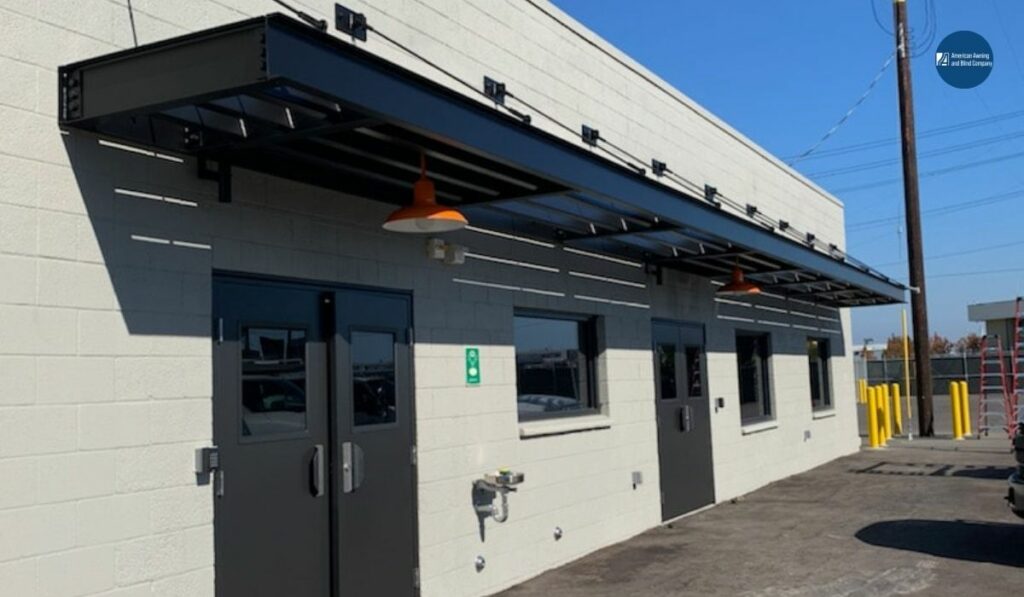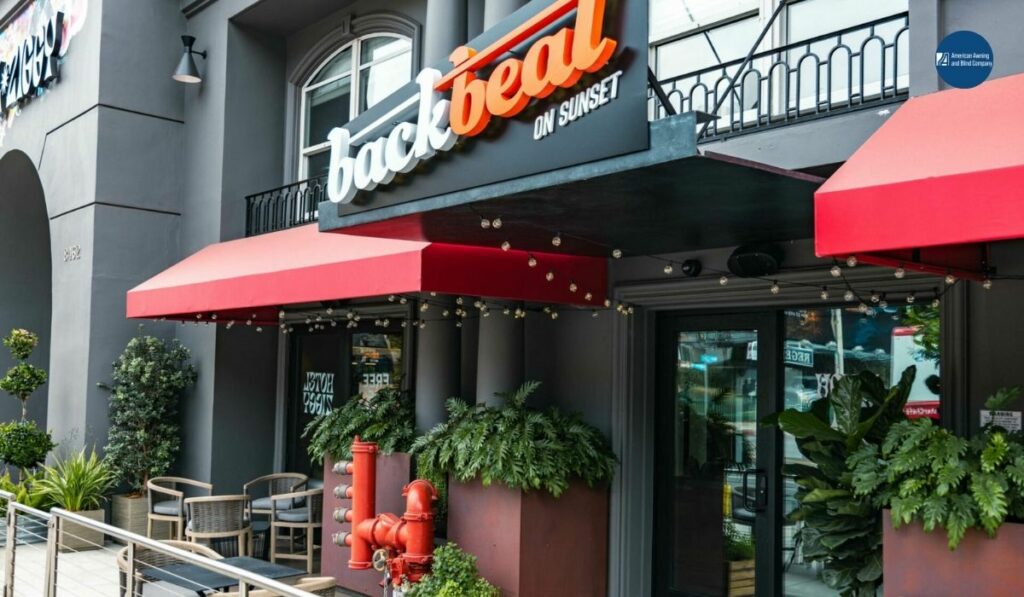In the ever-evolving tapestry of urban landscapes, architecture serves as both a functional necessity and an expressive art form. Among the many architectural elements that define modern cityscapes, metal canopies have emerged as versatile and impactful features. These structures not only provide practical benefits but also contribute to the aesthetic appeal and character of urban environments. From offering shelter and shade to creating dynamic public spaces, metal canopies are reshaping the way we experience and interact with our cities.
Functionality and Adaptability:
Metal canopies fulfill a range of practical functions, making them indispensable in urban settings. Their primary role is to protect from the elements, offering shelter from rain, sun, and other weather conditions. Placed strategically in areas such as pedestrian walkways, outdoor seating areas, and transportation hubs, these canopies enhance the comfort and safety of city dwellers.
Moreover, metal canopies are highly adaptable in design and application. Available in various shapes, sizes, and materials, they can be customized to suit the unique requirements of different urban environments. Whether it’s a sleek and modern canopy accentuating a bustling city square or a more minimalist structure complementing a tranquil park, these architectural features seamlessly integrate into diverse settings while adding functionality and aesthetic appeal.
Enhancing Aesthetics and Identity:
Beyond their practical purposes, metal canopies contribute significantly to the visual appeal and identity of urban spaces. With their clean lines, contemporary designs, and reflective surfaces, these structures serve as focal points, drawing attention and enhancing the overall aesthetics of their surroundings. They have the power to transform mundane areas into visually striking locales, elevating the character and charm of urban environments.

Furthermore, metal canopies play a crucial role in defining the identity and personality of a city. In an era characterized by globalization and urbanization, cities are constantly seeking ways to differentiate themselves and showcase their unique cultural heritage. Metal canopies, with their distinctive designs and architectural flair, serve as symbols of innovation and progress while reflecting the local ethos and identity of a place.
Creating Dynamic Public Spaces:
One of the most significant contributions of metal canopies to urban environments is their ability to create dynamic and inviting public spaces. By providing shaded areas and sheltered gathering spots, these structures promote social interaction and community engagement. They serve as venues for various outdoor activities, including markets, performances, and public gatherings, enriching the urban experience and fostering a sense of community.
Moreover, metal canopies can incorporate sustainable features such as solar panels and rainwater harvesting systems, aligning with the growing emphasis on eco-friendly urban design. By harnessing renewable energy sources and promoting environmental stewardship, these canopies contribute to the sustainability and resilience of urban landscapes, making cities more livable and environmentally conscious.
Embracing Innovation:
Metal canopies represent a fusion of traditional craftsmanship and modern technology, embodying the spirit of innovation in urban design. Advanced manufacturing techniques and materials allow for the creation of canopies that are not only durable and weather-resistant but also aesthetically pleasing and structurally sound. Architects and designers are pushing the boundaries of creativity, experimenting with innovative forms and configurations to redefine the possibilities of metal canopy architecture. This commitment to innovation ensures that metal canopies continue to evolve and adapt to the ever-changing needs and aspirations of urban communities.
Promoting Public Health and Well-being:
In addition to their functional and aesthetic benefits, metal canopies contribute to public health and well-being in urban environments. By providing shaded areas and protection from harmful UV radiation, these structures encourage outdoor activities and promote physical health. Studies have shown that access to shaded spaces can reduce the risk of heat-related illnesses and enhance overall comfort, particularly during hot summer months. Moreover, the presence of metal canopies in urban settings encourages people to spend more time outdoors, fostering a deeper connection with nature and improving mental well-being.
Fostering Economic Development:
Metal canopies play a crucial role in fostering economic development and revitalizing urban areas. By enhancing the attractiveness and usability of public spaces, these structures attract visitors and tourists, stimulating local businesses and supporting economic growth. Furthermore, the installation of metal canopies in commercial districts and public squares can serve as catalysts for urban regeneration, sparking investment and revitalizing neglected or underutilized areas. The creation of vibrant and inviting urban environments not only improves the quality of life for residents but also boosts property values and attracts new businesses, contributing to the overall prosperity of cities.
Embracing Sustainability
Sustainability is a central consideration in contemporary urban design, and metal canopies offer opportunities to integrate environmentally friendly features into urban landscapes. By incorporating renewable energy sources such as solar panels and integrating rainwater harvesting systems, these structures minimize their environmental footprint and contribute to the resilience of urban ecosystems. Moreover, the use of durable and recyclable materials in the construction of metal canopies reduces waste and promotes resource efficiency, aligning with principles of sustainable development and environmental stewardship.

Conclusion
Metal canopies have emerged as versatile and impactful elements in shaping urban environments, offering a blend of functionality, aesthetics, and sustainability. From providing shelter and shade to promoting social interaction and economic development, these structures contribute to the vibrancy and livability of cities around the world. As urbanization continues to accelerate and cities grapple with the challenges of climate change and population growth, metal canopies will remain essential tools for creating resilient, inclusive, and sustainable urban spaces. By embracing innovation, promoting public health and well-being, fostering economic development, and embracing sustainability, metal canopies are poised to play an increasingly vital role in shaping the future of urban life.
For inquiries about metal canopies and their integration into urban environments, contact American Awning & Blind Company.
FAQs
What are metal canopies, and how do they function in urban environments?
Metal canopies are architectural structures typically made of metal materials like steel or aluminum. They serve multiple functions in urban settings, primarily protecting from the elements such as rain, sun, and wind. Placed strategically in areas like pedestrian walkways, outdoor seating spaces, and transportation hubs, metal canopies enhance comfort and safety for city dwellers.
How do metal canopies contribute to the aesthetics and identity of urban spaces?
Metal canopies contribute significantly to the visual appeal and identity of urban areas. With their sleek designs, contemporary aesthetics, and reflective surfaces, they serve as focal points, transforming mundane areas into visually striking locales. Additionally, these structures help define the identity and personality of a city, reflecting its cultural heritage and ethos through distinctive designs and architectural flair.
What role do metal canopies play in creating dynamic public spaces?
Metal canopies play a crucial role in creating dynamic and inviting public spaces by providing shaded areas and sheltered gathering spots. These spaces promote social interaction and community engagement, serving as venues for various outdoor activities like markets, performances, and public gatherings. Furthermore, metal canopies can incorporate sustainable features such as solar panels and rainwater harvesting systems, aligning with eco-friendly urban design principles.
How do metal canopies embrace innovation in urban design?
Metal canopies represent a fusion of traditional craftsmanship and modern technology, embodying innovation in urban design. Advanced manufacturing techniques and materials allow for the creation of durable, weather-resistant, and aesthetically pleasing structures. Architects and designers continuously push boundaries by experimenting with innovative forms and configurations, ensuring that metal canopies evolve to meet the changing needs and aspirations of urban communities.
What are the public health and well-being benefits associated with metal canopies?
Metal canopies contribute to public health and well-being by providing shaded areas and protection from harmful UV radiation, encouraging outdoor activities, and promoting physical health. Access to shaded spaces reduces the risk of heat-related illnesses and enhances overall comfort, particularly during hot summer months. Moreover, the presence of metal canopies encourages people to spend more time outdoors, fostering a deeper connection with nature and improving mental well-being.
How do metal canopies foster economic development in urban areas?
Metal canopies play a crucial role in fostering economic development by enhancing the attractiveness and usability of public spaces, attracting visitors and tourists, stimulating local businesses, and supporting economic growth. Additionally, the installation of metal canopies in commercial districts and public squares can serve as catalysts for urban regeneration, sparking investment and revitalizing neglected or underutilized areas.
How do metal canopies contribute to sustainability in urban environments?
Metal canopies offer opportunities to integrate environmentally friendly features into urban landscapes, contributing to sustainability and environmental stewardship. By incorporating renewable energy sources like solar panels and rainwater harvesting systems, these structures minimize their ecological footprint and promote the resilience of urban ecosystems. Additionally, the use of durable and recyclable materials reduces waste and promotes resource efficiency, aligning with the principles of sustainable development.
How customizable are metal canopies to suit different urban environments?
Metal canopies are highly adaptable in design and application, allowing for customization to suit the unique requirements of various urban environments. Available in a range of shapes, sizes, and materials, these structures can be tailored to complement different architectural styles and urban contexts. Whether it’s a sleek and modern canopy enhancing a bustling city square or a more minimalist structure complementing a tranquil park, metal canopies seamlessly, integrate into diverse settings while adding functionality and aesthetic appeal.
What are some examples of innovative features incorporated into metal canopies?
Innovation in metal canopy design extends beyond traditional functionalities. Some examples of innovative features include integrated lighting systems for enhanced ambiance and visibility during nighttime, retractable or adjustable mechanisms for flexible use depending on weather conditions, and modular designs that allow for easy assembly, disassembly, and reconfiguration. Additionally, advancements in materials technology have led to the development of self-cleaning surfaces and coatings that reduce maintenance requirements, ensuring the longevity and sustainability of metal canopy installations in urban environments.
